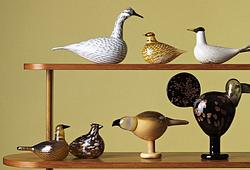Einar Forseth
A mosaic work 'Barmhärtigheten' (The Mercy), probably an original study for the Golden Hall at the Stockholm City Hall.
Ca 1921-22. Part gilt, back lacquered wooden frame, a tergo in writing: ORIGINAL STUDIE för MOSAIKEN I GYLLENE SALEN STOCKHOLMS STADSHUS "BARMHÄRTIGHETEN" STHLM HÄLSOVÅRD KOMP. o INLAGD AV E FORSETH I TREPTOW and in red crayon "SKÄNKT AV KONSTNÄREN" and XI. The mosaic 55.5 x 64.5 cm, including the frame 60 x 68 cm.
More information
At the turn of the century, 1900, Stockholm expanded heavily. An architectural competition for designing the new City Hall was announced in 1902. The winning proposal came from the young architect Ragnar Östberg.
The construction of Stockholm City Hall began in 1911. The inauguration took place twelve years later, on Midsummer's Eve in 1923.
Ragnar Östberg believed that architecture and art belong together and art should be a natural extension of architecture.
In January 1921, he put forward the proposal that the Golden Hall should be covered with glass mosaics. Östberg asked the artist Einar Forseth to make some sketches for this project.
Einar Forseth had been educated at Valands in Gothenburg and at the Art Academy in Stockholm. After receiving several grants he went abroad for studies during several years.
As an artist, Einar Forseth is primarily associated with monumental works. He designed stained glass windows, mosaic work, ceiling paintings and altarpieces in addition to his work as a designer at several porcelain factories where he created table decorations. The motifs for his landscapes were mainly taken from Greece and Skåne (Scania), His mosaics and stained glass were strongly influenced by Byzantine art.
This actual work is probably executed by Joseph Habler, who supplied mosaics to Forseth, including the ones for the City Hall.

























































